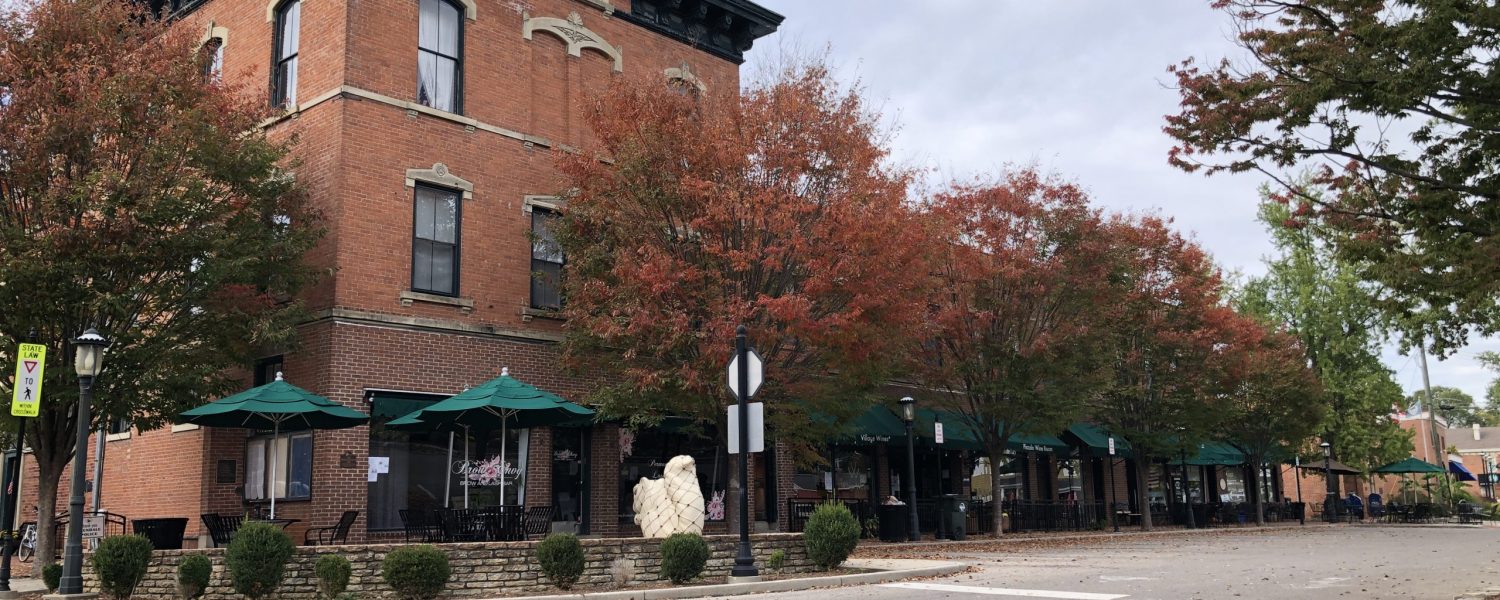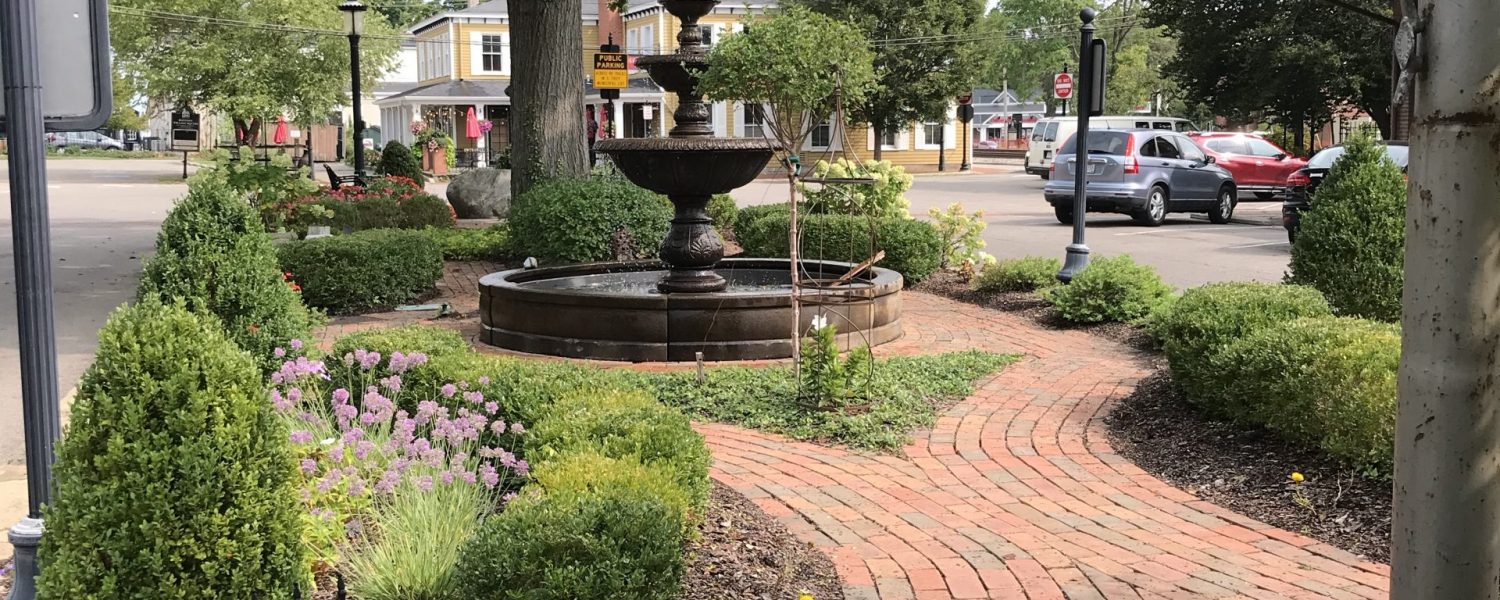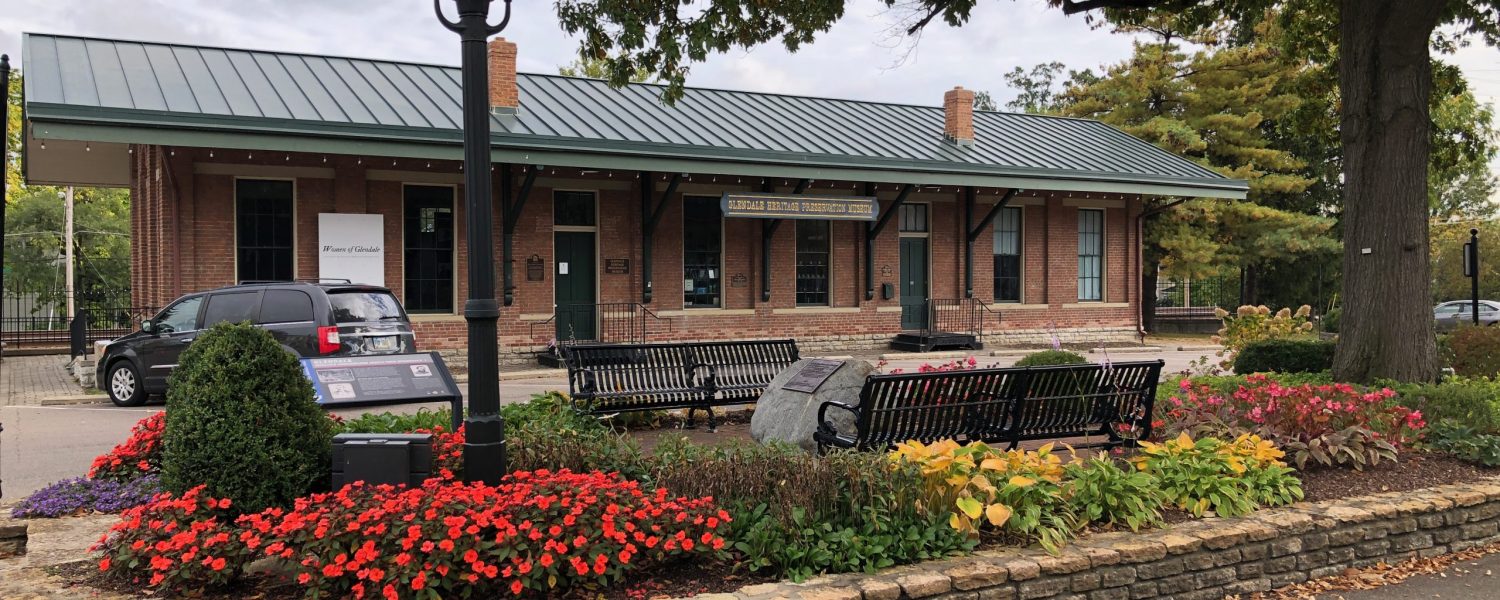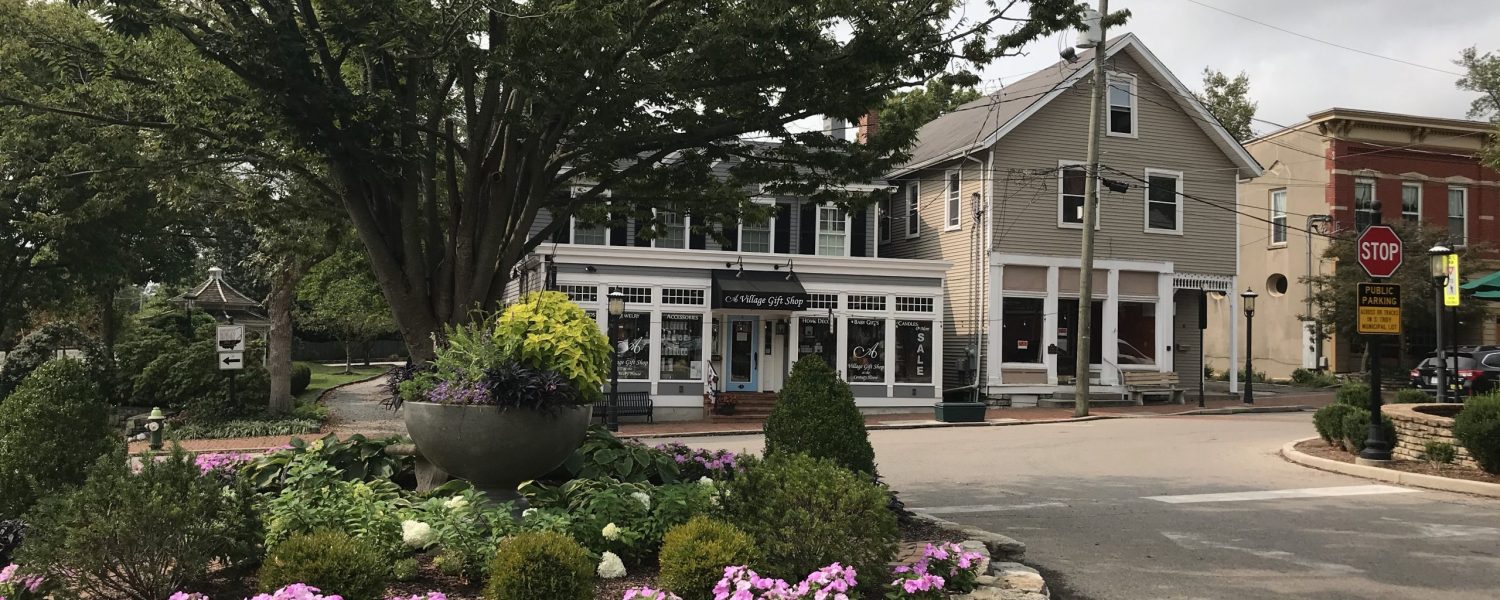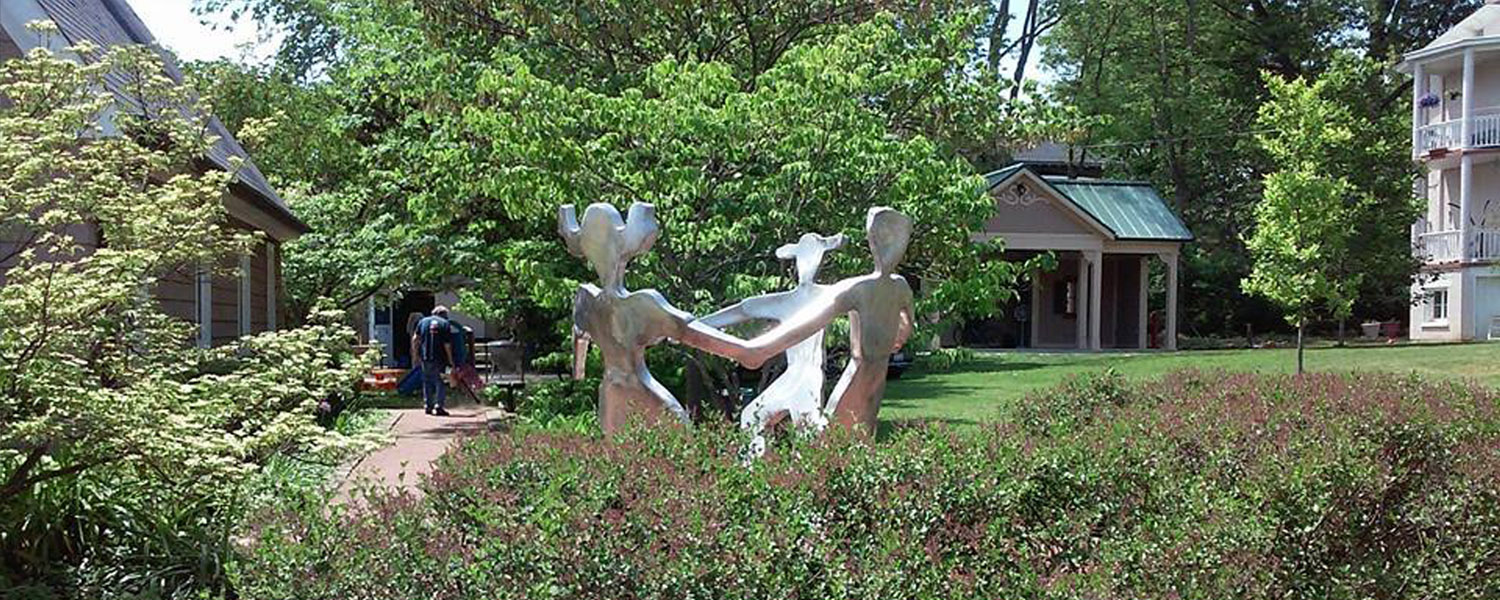How Glendale Heritage Preservation Came Into Being
Committees:
Photography: Rick Mulhauser and Bob Gove photographed each building in the proposed historic district.
Verification: Ginny Latta, chairperson, canvassed 380 homes seeking information about the history of each house.
Judy Kitchen, Architectural Historian and Administrator at the Historic Preservation Office in Columbus, drew up a possible outline of the Glendale Historic district comprising 392 acres.
The completed nomination was submitted on September 11, 1975.
The Statement of Significance combined a seven page description listing 59 pivotal structures including private buildings, public buildings and parks, with an architectural description, date of construction, and first owner. The package also included 29 glossy 8″ X 10″ photographs, recent maps, a map form the Title Atlas of 1868 and a copy of the Crawford and Clark Subdivision.
The description of the Historic District began as follows:
“The Glendale Historic District is comprised of and irregular area of 392 acres. The district slopes southeastward from a high point of 725 feet above mean sea level, to a low point of 625 feet above mean sea level, containing 380 good background houses, 58 intrusions, three unclassified structures and 59 or more pivotal structures. The district is arranged astraddle the railroad tracks of the Chessie System with the business district clustered around the depot. Paved Streets in an irregular arrangement follow R. C. Phillips’ plan of 1851, which repeats the particular topographic situation. Accented by four parks, gas lighted, with many large trees, the village retains the original appearance shown on the pre-Civil War Newton Strowbridge lithograph.”
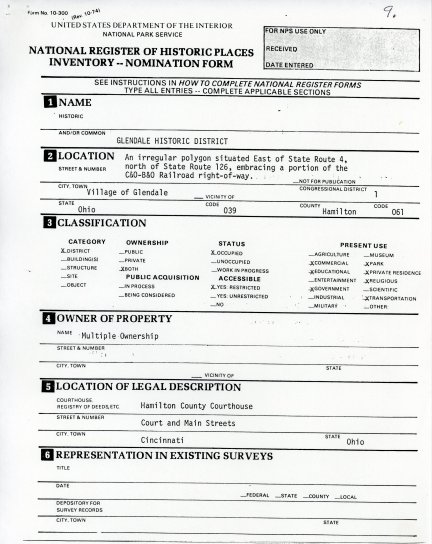
First page of National Registry application

“G” book, Glendale’s Heritage © 1976 Glendale Heritage Preservation

